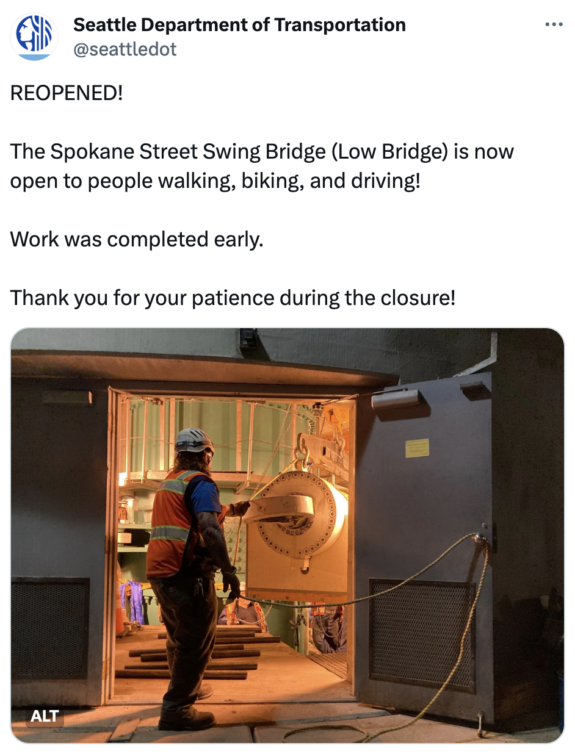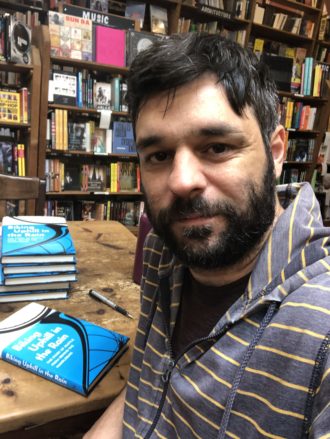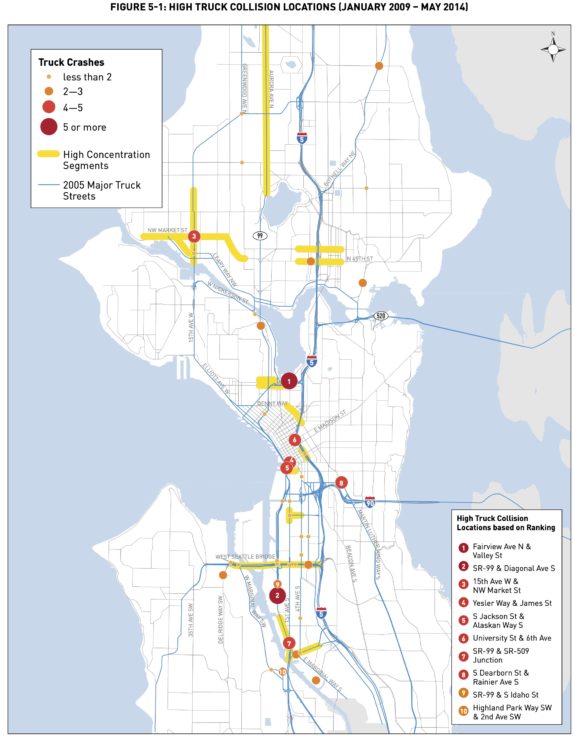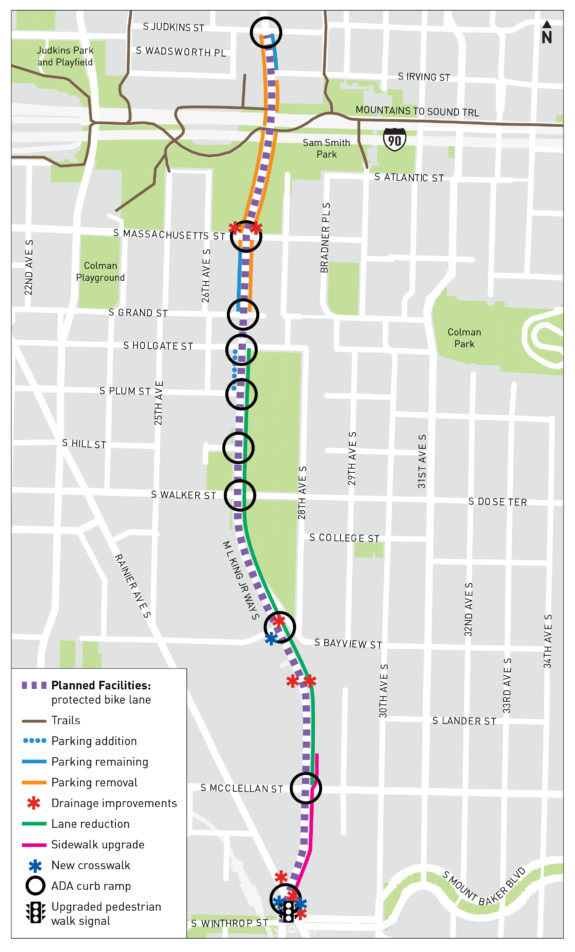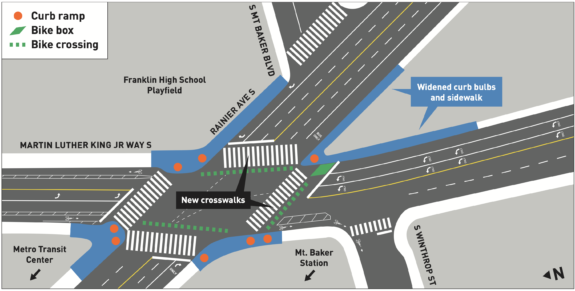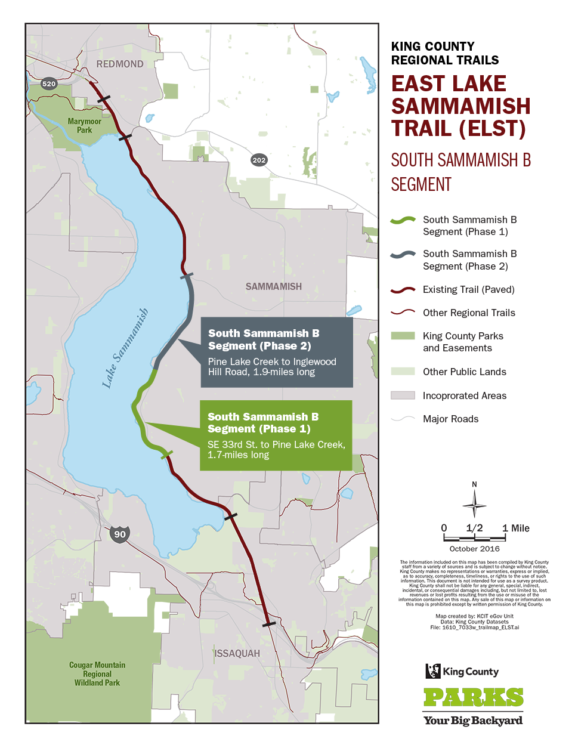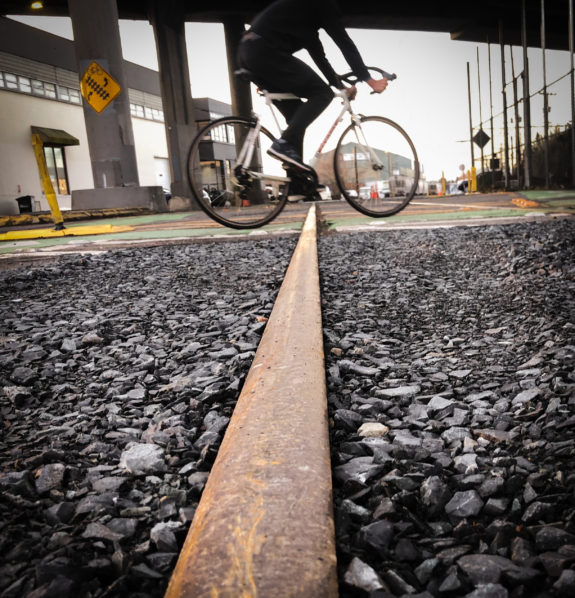
In a surprise development in the long, injurious and frustrating history of the Ballard Missing Link of the Burke-Gilman Trail, Councilmember Dan Strauss announced Tuesday an agreement with the Ballard Terminal Railroad Company that should set the city up to pave over the rarely used tracks near and under the Ballard Bridge.
“This is a coming together moment,” said Strauss during Tuesday’s City Council meeting (starts around the 1:37 mark in this video). “Parties that typically disagree, we have found agreement here.” Because the city owns the land under the tracks and leases it to the railroad, a city ordinance is required in order to approve the transfer from the Ballard Terminal Railroad to another entity called the Meeker Southern Railroad, which the Ballard Terminal Railroad Company owns. The Council agreed unanimously to put the ordinance on an accelerated path in order to get it approved in time for crews to pour the asphalt before the end of the year. A final vote is scheduled for October 24.
A group of people who were injured while biking in this area sued the city and Ballard Terminal Railroad in 2022, and their settlement agreement led the city to make a confusing series of changes in early 2023 and commit to building a more complete rail crossing by the end of the year. Another group of injured people have since filed claims. This is part of the urgency in passing this ordinance. Though the city’s initial plan for a second phase of changes would have kept the rails in place, paving over the rails (and the recently-dug gravel pits) is a much better solution if that is an option.
The full text of the ordinance is not yet posted on the Council’s calendar, but Strauss said it would authorize the SDOT Director “to approve the transfer of the railway franchise from the Ballard Terminal Railroad Company to the Meeker Southern Railroad.” He did not specify the begin and end points of the section to be abandoned or why transferring the railway franchise to a subsidiary is necessary.
Cascade Bicycle Club celebrated the news and urged the Council to approve the ordinance. “Cascade supports paving over the hazardous and dis-used railroad tracks that have caused countless crashes and injuries over the past two decades,” said Cascade Bicycle Club Executive Director Lee Lambert. “This would be a step forward in making this short section of the Missing Link safer. We’d like to thank SDOT and the Ballard Terminal Railroad for reaching an agreement to completely cover the railroad tracks to ensure people can safely bicycle through that area of Ballard. However, this project is just the first step in closing the Missing Link.” Cascade said they would continue advocating for building the designed trail plan along Shilshole Ave.
(more…)
